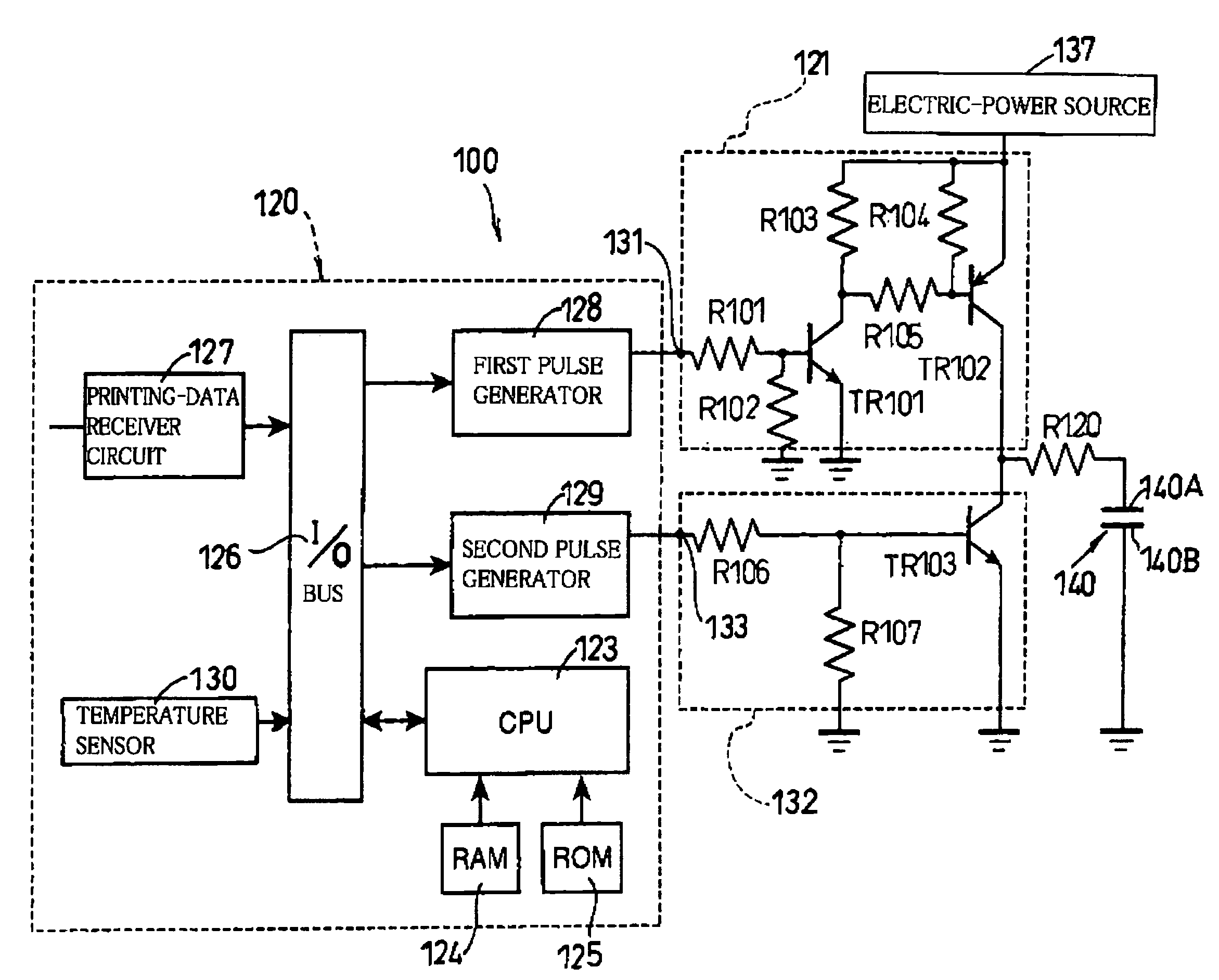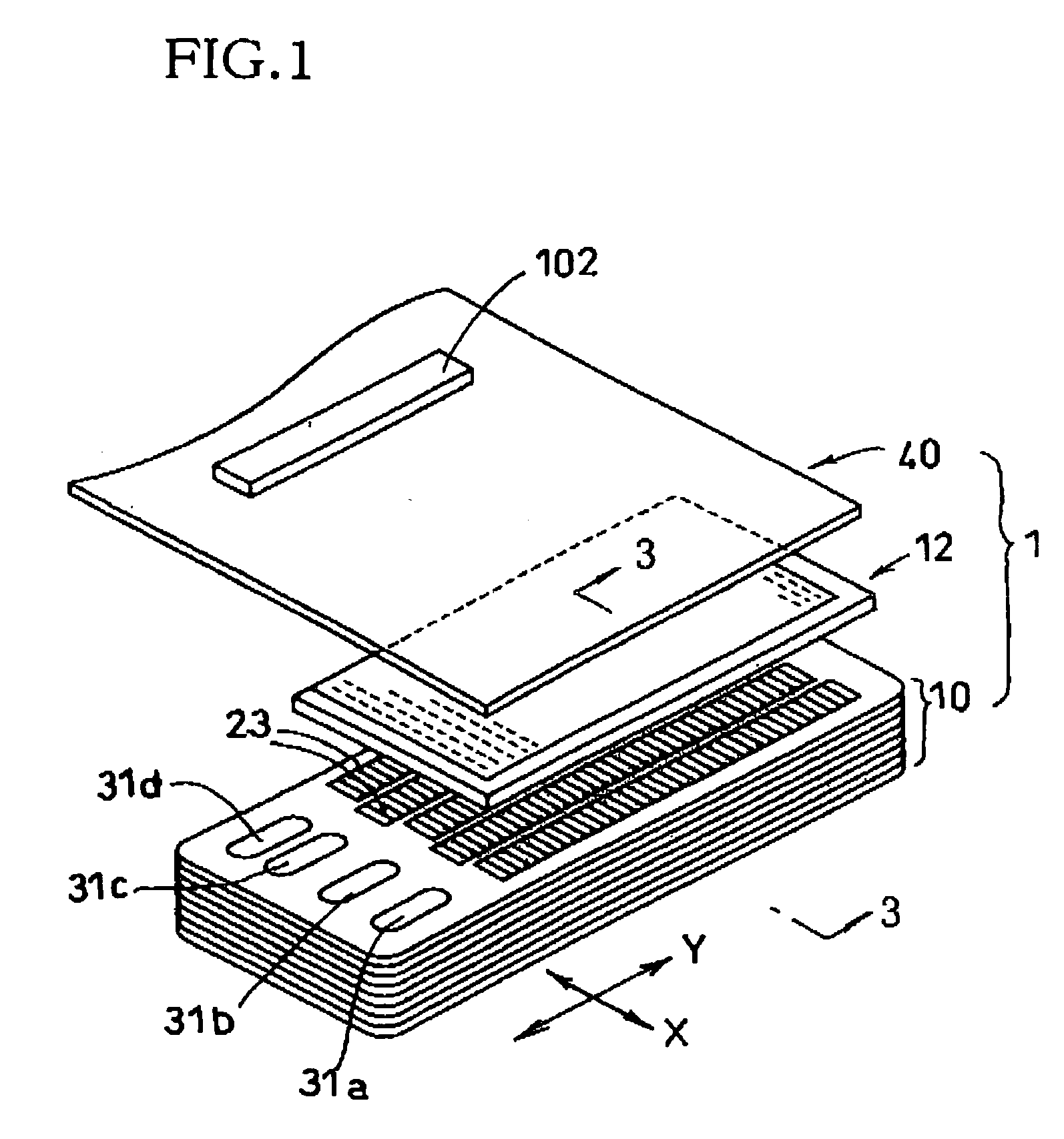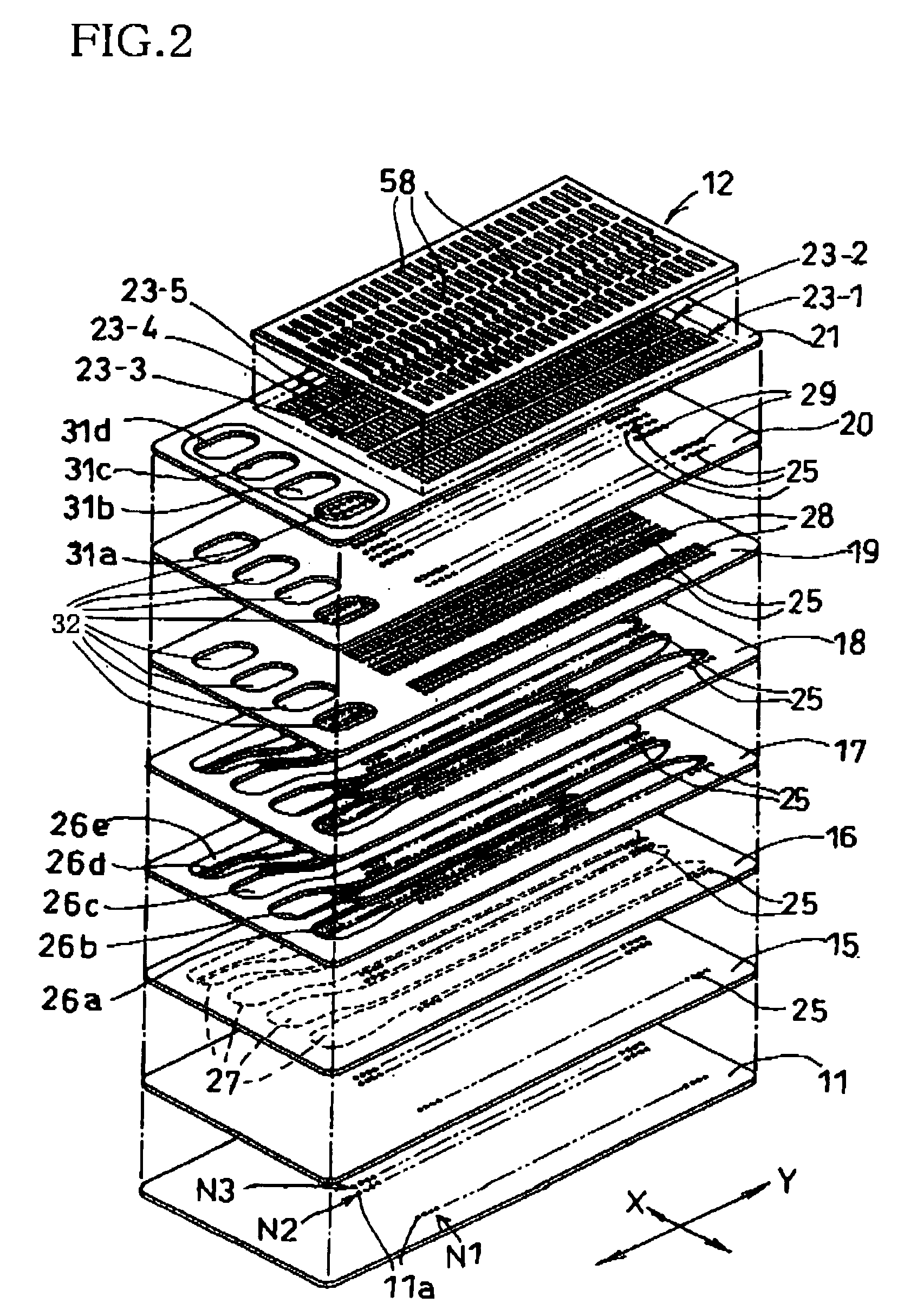Ink-droplet ejecting apparatus
- Summary
- Abstract
- Description
- Claims
- Application Information
AI Technical Summary
Benefits of technology
Problems solved by technology
Method used
Image
Examples
experiment 1
[0071] Experiment 1—FIG. 7A
[0072] In this experiment, respective pulse lengths WF of the first and second ejection pulses PF1, PF2 are equal to 1.0AL (this is true with all experiments 1 through 6). Respective pulse lengths of the first and second cancel pulses PS1, PS2 are equal to from 1.3AL to 1.8AL. A time interval between the rise SE1 of the first cancel pulse PS1 and the fail FS2 of the second ejection pulse PF2 is equal to from 3.0AL to 4.5AL. The results of this experiment show that when the duty percentage is equal to 50.0% or 25.0%, the ink ejections are bad (“X”) with respect to the entire frequency range of from 18 kHz to 26.4 kHz; when the duty percentage is equal to 12.5%, the ink ejections are good (“O”) with respect to the entire frequency range; and when the duty percentage is equal to 33.0%, the ink ejections are deflected (“Δ”) with respect to a frequency range of from 25.2 kHz to 26.4 kHz.
experiment 2
[0073] Experiment 2—FIG. 7B In this experiment, respective pulse lengths of the first and second cancel pulses PS1, PS2 are equal to from 0.3AL to 0.4AL. A pulse interval between the rise SE1 of the first cancel pulse PS1 and the fall FS2 of the second ejection pulse PF2 is equal to from 3.0AL to 4.5AL. The results of this experiment show that when the duty percentage is equal to 12.5%, the ink ejections are good (“O”) with respect to the entire frequency range; when the duty percentage is equal to 50.0% or 33.0%, the ink ejections are bad (“X”) with respect to the entire frequency range; and when the duty percentage is equal to 25.0%, the ink ejections are deflected (“Δ”) with respect to a frequency range of from 24.0 kHz to 26.4 kHz.
experiment 3
[0074] Experiment 3—FIG. 7C
[0075] In this experiment, a pulse length of the first cancel pulse PS1 is equal to from 0.3AL to 0.4AL and a pulse length of the second cancel pulse PS2 is equal to from 1.3AL to 1.8AL. A pulse interval between the rise SE1 of the first cancel pulse PS1 and the fall FS2 of the second ejection pulse PF2 is equal to from 3.0AL to 4.5AL. The results of this experiment show that when the duty percentage is equal to 12.5%, the ink ejections are good (“O”) with respect to the entire frequency range; when the duty percentage is equal to 50.0%, the ink ejections are deflected (“Δ”) with respect to a wide frequency range of from 21 kHz: to 26.4 kHz; and when the duty percentage is equal to 33.0%, the ink ejections are deflected or bad (“X”) with respect to a wide frequency range of from 21 kHz to 26.4 kHz. In addition, when the duty percentage is equal to 25.0%, the ink ejections are bad with respect to a frequency range of from 18 kHz to 20 kHz.
PUM
 Login to View More
Login to View More Abstract
Description
Claims
Application Information
 Login to View More
Login to View More - R&D
- Intellectual Property
- Life Sciences
- Materials
- Tech Scout
- Unparalleled Data Quality
- Higher Quality Content
- 60% Fewer Hallucinations
Browse by: Latest US Patents, China's latest patents, Technical Efficacy Thesaurus, Application Domain, Technology Topic, Popular Technical Reports.
© 2025 PatSnap. All rights reserved.Legal|Privacy policy|Modern Slavery Act Transparency Statement|Sitemap|About US| Contact US: help@patsnap.com



